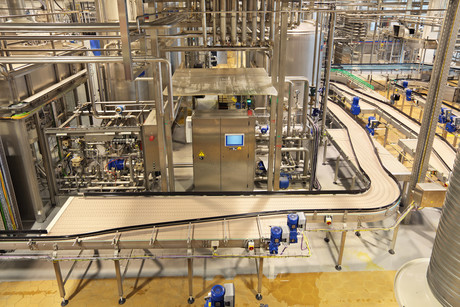How Smart Industry is changing our way of developing

The industrial world is rapidly changing with the emergence of ‘Smart Industry’. Today’s production machines have become highly integrated mechatronic systems with a significant amount of embedded software. This fact requires engineers from all three mechatronic domains — mechanical engineering, electrical engineering and software engineering — to work together concurrently and evolve their ways of designing, testing and verifying machine software in order to reach the expected level of functionality and quality.
As industry evolves, software components provide a significant part of the entire added value in machines or production plants. Embedded software running on PLCs, industrial PCs or FPGAs (field-programmable gate arrays) involves closed-loop control functionality that ensures product quality as well as providing predictive maintenance algorithms for increased uptime without service intervention.
The growing trend towards increasing the size and complexity of the code installed on production machinery is a challenge for classically trained machine builders. Many are mechanically focused and need to maintain experience with elaborate workflows and toolchains for mechanical construction. When it comes to software design, machine builders are often unaware of tools for modelling, simulation, automatic testing and code generation, which are widely used by their engineering peers in aerospace and automotive industries.
While it may be obvious for serious mechanical engineers to use a CAD tool and run simulations before physically building the mechanical structure of a machine, in the case of embedded software it is entirely different. A major portion of machine software is still programmed manually and only comprehensively tested when the machine becomes available.
Another major factor in the evolution of industry is the growing amount of data. Vision sensors, drives, production machines and power plants all collect a growing amount of measured data during operation. However it is only the analysis of that data that makes it possible to gain knowledge about product quality, energy consumption, machine health status and other economically relevant parameters.
This is where the use of analytical and statistical algorithms for condition monitoring and predictive maintenance is beneficial; they can be used to derive actionable insights from data that has been collected and stored in files, in databases or in the cloud. This concept is taken one step further with model-based predictive maintenance, in which an observer model is utilised that is capable of deriving states for factors that cannot be measured directly.
The large amount of measured data is collected by sensors and pre-processed by controllers or other processing hardware on the plant floor. The results are forwarded to some form of gateway or data collection point. The sensors, controllers, gateways and high-level analytic software act together to form a dense network known today as the Industrial Internet of Things (IIoT).
To become innovative leaders in their market, equipment manufacturers need to rapidly develop skills and expertise in these new design approaches and technologies. As mechanical engineers typically are not experts in software engineering, they can increase their productivity and system reliability by using model-based design tools that can generate code automatically for specific hardware platforms.
Models enable intuitive and clear construction from predefined building blocks with continuous verification. With this approach, design flaws are corrected early on, which considerably shortens design cycles. Next the algorithms need to be implemented, which can be considerably challenging using traditional methods. Historically, algorithms typically had to be developed by experts in the relevant programming language. This practice is not only time-consuming, it is also prone to errors with the ever-increasing complexity of the algorithms used in machinery. Manually implemented functions — even though they have already been verified through simulations — may contain errors and not behave the way they were intended to.
In contrast, when real-time functionality is directly generated using automatic code generation, these errors can be avoided. Doing so not only saves time but also enables the creation of innovative solutions with smaller development teams. Model-based design with automatic code generation enables engineers to fully leverage their expertise in construction to build a machine or plant without worrying about programming language details.
Smart Industry encompasses the growing complexity of software and an ever-increasing amount of data. In the long term, these trends will challenge engineers to become proficient in using new methods and tools in order to embrace this complexity. For now, industrial companies who manage to shift their focus towards interdisciplinary design thinking (rather than production thinking) will emerge from the transformation as leaders in their areas and with new business models for their market.
Anticipating maintenance problems with predictive analytics
By utilising predictive analytics, process manufacturers can predict failures, enhance...
Air-gapped networks give a false sense of security
So-called 'air-gapped' OT networks can still fall victim to cyber attacks, so what is the...
Maximising automation flexibility: the ISV-driven approach
Vendor lock-in has long been a significant barrier to innovation in the industrial sector, making...












